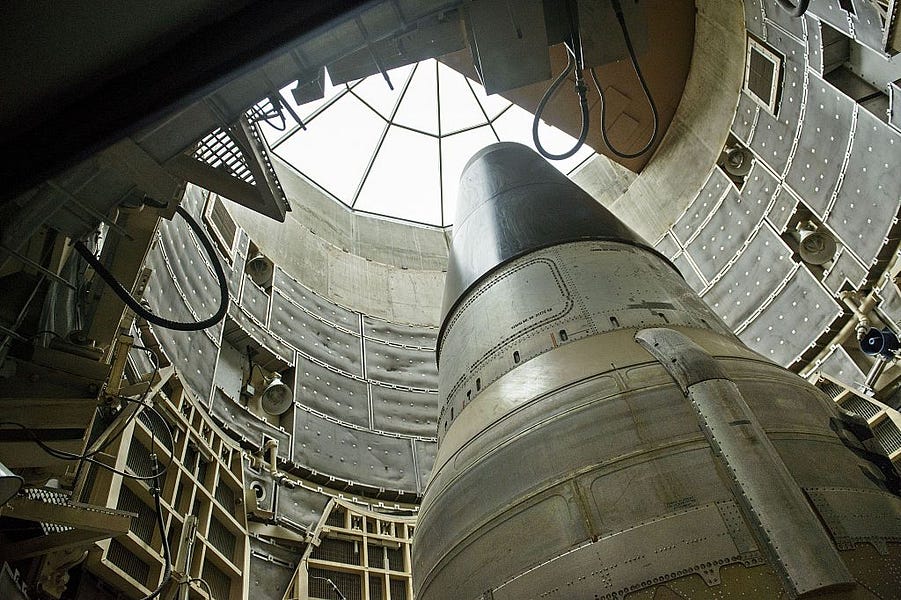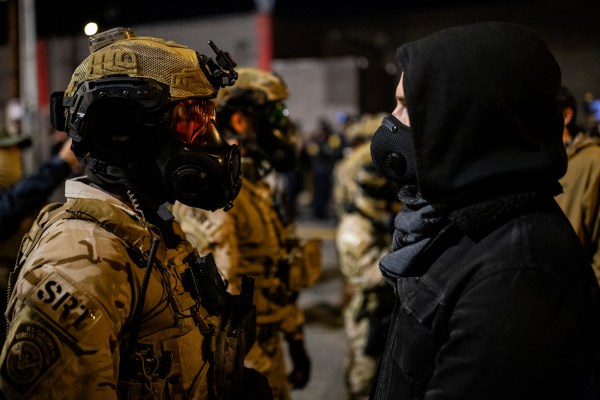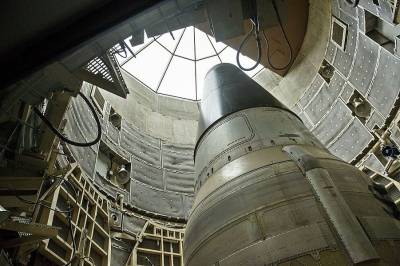One of the most important national security policy statements any U.S. administration issues sets forth its nuclear deterrence policy. Yet, 18 months after taking office, the Biden administration has failed to accomplish this vital task. The key document, the 2022 Nuclear Posture Review (NPR), has been completed: A classified version was sent to the Congress last March, and shortly afterward the Defense Department published a five paragraph, largely substance-free, “fact sheet” acknowledging that. But the unclassified version of the NPR has not yet been released. It is crucial that allies covered by our nuclear shield understand what our policy is; equally, potential enemies, particularly nuclear-armed ones, must comprehend our deterrence policy. Inexplicably, the administration remains silent.
What we do know about the Biden nuclear policy, largely inferred from congressional testimony, is that the fundamental tenets of longstanding U.S. policy appear unchanged:
Deterrence rests on the ability to convince an enemy leadership that our retaliation will impose costs that will outweigh any gains they hope to make through aggression;
To be credible, we must have a modern retaliatory force that can clearly impose the costs our policy requires—even under the worst-case conditions of a surprise attack;
Our retaliation must focus on assets the enemy leadership values—not on what we value. This means we must study potential enemy leaderships to understand their value structures.
We also know that—with two exceptions—the nuclear modernization program that the administration inherited from its two predecessors will continue. This includes the new Sentinel ICBM, a land-based system; a minimum of 12 Columbia class missile submarines and the life-extended Trident II missile they will carry; the B-21 bomber; and a replacement air-launched cruise missile. The low-yield submarine warhead, much needed to provide a credible response—and therefore a deterrent—to potential enemy use of a low yield (non-strategic/battlefield sized) weapon, will remain deployed. The administration did decide to terminate two new starts from the Trump administration: the life extension of the B-83 bomb (which the Obama administration had wanted to retire) and the proposed nuclear sea-launched cruise missile program—although it seems that Congress may have a different view on the latter. The warhead programs to support nuclear modernization, with the exception of the B-83, will also proceed.
We also thought we knew that after major debate both in public and behind closed doors, and after many intense consultations with key congressional leaders and with our allies, the administration—much to the dismay of progressives—backed away from its early intention to institute a “no first use” policy. According to the fact sheet, the compromise U.S. policy that emerged from the NPR is:
“the fundamental role of US nuclear weapons is to deter nuclear attack on the United States, our allies and partners. The United States would only consider the use of nuclear weapons in extreme circumstances to defend the vital interests of the United States or its allies and partners.”
Translated from bureaucratic jargon, this appears to mean the nuclear umbrella remains intact: We would, if necessary, use nuclear weapons to respond to a massive non-nuclear attack on our allies. And so we avoid a dangerous and destabilizing no-first-use policy that not only would have disheartened allies and possibly spurred proliferation, but would have been regarded by our potential enemies as meaningless.
That the review remains classified, however, is causing concerns among allies who are wondering why it has not been shared. This has raised questions about whether the administration is concealing other language casting doubt on the hard-fought compromise. This concern was amplified on August 5 when a senior Defense Department official said “we retain the goal of moving towards the sole purpose declaration [that is, nuclear weapons are useful to deter only nuclear attack but not massive conventional assault—which our allies worry about] in the future and the NPR makes that clear.” So much for reassuring allies and warning those who threaten them.
The DoD fact sheet also raises a number of other points that require urgent explanation:
It underscores the administration’s “commitment to reducing the role of nuclear weapons,” a mantra that administration officials continue to repeat. It is completely unclear, however, what this means.
How does the United States “reduce the role of nuclear weapons”?
How does it do so in a world in which Russia, China, and even North Korea continue to field new nuclear capabilities as part of programs begun at least 10 years ago—during which time period the U.S. has yet to deploy a new nuclear system?
How does it do so in a world in which Putin and his minions make daily threats to use nuclear weapons against the West in frenzied and apocalyptic terms unheard even in the worst days of Nikita Khrushchev and the Cold War?
How does it do so in a world in which the U.S. faces, for the first time ever, two peer nuclear-armed potential enemies?
The fact sheet says the U.S. will “seek to avoid costly arms races.”
What does this mean at a time when it is widely acknowledged that Russia and China have been racing each other and racing ahead by fielding hundreds of new nuclear and nuclear-capable systems of all ranges for over a decade, while the U.S. has exercised restraint?
Is this meant to signal some lack of support for triad (air, land, sea) modernization or for an implied cap on the size of our nuclear deterrent?
The fact sheet states the U.S. will “reestablish our leadership in arms control.”
What does it mean when we consider that Beijing has indicated its utter disinterest in arms control or even in transparency talks?
What does that mean when we consider that Russia systematically violates, as a matter of national policy, every arms control and risk reduction treaty it has signed over the last 30 years?
What does it mean when we consider that in early 2021 some prominent arms control advocates suggested the U.S. reduce unilaterally its nuclear forces to “lead by example”?
The administration should move quickly and decisively to take two steps.
First, release an unclassified version of the 2022 NPR. The purported bureaucratic excuse for not doing so to date has grown threadbare, and the continued failure to be transparent is dangerous.
Second, and optimally coincident with the public release of the NPR, have a senior DoD official, preferably Secretary Lloyd Austin or Deputy Secretary Kathleen Hicks, make a major speech that answers authoritatively the uncertainties raised by the NPR and its fact sheet.
The longer these questions remain unanswered, the more uneasy allies become and potentially the more emboldened potential enemies grow.
Frank Miller served for three decades as a senior nuclear policy and arms control official in the Pentagon and on the National Security Council staff.






Please note that we at The Dispatch hold ourselves, our work, and our commenters to a higher standard than other places on the internet. We welcome comments that foster genuine debate or discussion—including comments critical of us or our work—but responses that include ad hominem attacks on fellow Dispatch members or are intended to stoke fear and anger may be moderated.
With your membership, you only have the ability to comment on The Morning Dispatch articles. Consider upgrading to join the conversation everywhere.